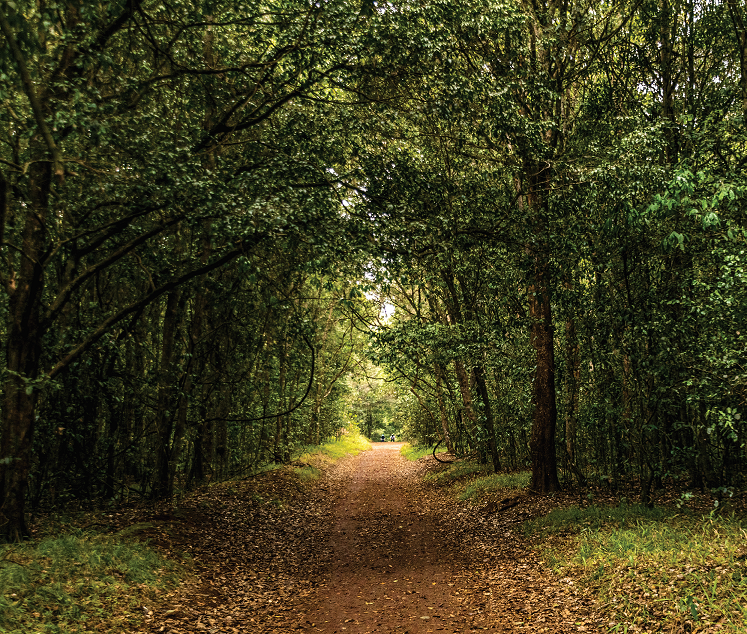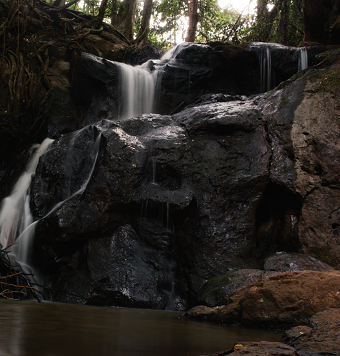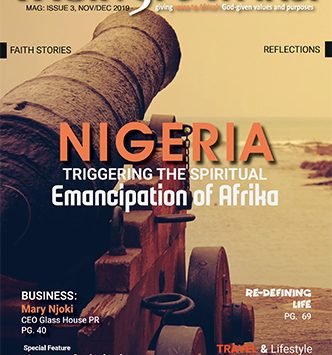
Chioma Phillips is the Editor of Msingi Afrika Magazine and…
Read Next
TENDING AND KEEPING THE GREENS, GREEN
“The generation that destroys the environment is not the generation that pays the price. That is the problem.” ― Wangari Maathai
In the northern part of Nairobi, nestled between foreign missions and embassies, ambassadorial residences, schools, shops and petrol stations, its right to exist firmly established by a daughter of the land, stands Karura Forest. Comprised of three parts, separated by two main roads, the 1,041 hectares contains indigenous trees, plants and shrubs as well as various plantations of commercial trees; the cypress and the water guzzling eucalyptus among them. This urban forest also plays host to a variety of small mammals such as otters and civets, bush pigs and bushbuck, some reptiles such as pythons and monitor lizards, birds like the crowned eagle, butterflies and an assortment of other insects. If you’re keen, you can observe the agile Syke’s monkeys swinging through the tall, thick canopies.
Karura Forest has footpaths and cycling tracks and picnic grounds and a restaurant. It’s a great place to go to spend a day exploring and just getting away from the rush, if you’re looking for an urban escape. Some of the more popular spots within the forest tend to get a little crowded and loud, but there’s enough space in there for you to find some solace in silence, should you need some. Kenya Forest Service and Friends of Karura Forest have worked hard to transform the environment into a safe and secure one, allowing you quiet reflective time alone.
If you need a really good workout, you will find a wide variety of terrain, suitable to your cross-country trek, ride or run. The most enduring facet of Karura Forest in Nairobi, is not its leafy green canopies and wide open spaces for picnicking, nor is it the waterfall or the caves or the bats, nor is it the massive old trees, quite humbling in their stature… but it’s that Karura Forest stands as a living monument to overcoming oppression, bullies and greed in Afrika. It is impossible to visit Karura Forest without meditating on the price that one woman paid to ensure its survival.
Nobel Laureate, Professor Wangari Maathai was one fearless lioness when it came to the fight against injustice. Many know her for her work in the environment, but she was active and vocal on a wide variety of issues of social and political nature that were affecting Kenya in her day. In a very difficult political environment, Professor Maathai was radical in her beliefs and fervent in their pursuit, and the fruit is well known.
One of her most famous battles involved the protection of this same Karura Forest. In 1998, she found out that the Moi led government was planning to take over huge swathes of public land in the forest and distribute these to their supporters for private gain. She protested this in writing and in action by planting trees in Karura. In early ’99, she and a group of supporters tried to access the forest and were attacked and injured by the men who had been appointed to guard the site of a future golf course there. The police refused to do anything about it, but the incident had been captured on film and attracted international attention and triggered about eight months of student protests which were quelled using violence. Despite their best efforts to the contrary, the government retreated, but 2 years later, they backtracked and began reallocations of forest land, sparking more protests and multiple arrests of this bold and courageous lady.
The end of 2002 saw a new regime sworn in under Mwai Kibaki. Maathai joined the Government as Assistant Minister for Environment and Natural Resources. In the face of the looming changes that the Kibaki government was going to make concerning illicit land allocations, developers started to drop their claims to allotments in Karura Forest. The land had been saved.
Now, when one walks through what has been called ‘one of the largest urban gazetted forests in the world’ according to the Kenya Forest Service website, one is walking down pathways of history, of victory, hard fought. One is sitting on green lawns made possible by great personal sacrifice and fearless devotion that – in the era of the former President Moi – could so easily have become something else. One is looking at the determination of one woman, the late Prof. Wangari Maathai, who said, “No.” at a time when it was not ‘good’ for one’s personal health to defy those in leadership. Karura is a bold and living testament of victory, in a world that – sadly – loves the idea of overcoming, rather than the price they would have to pay.
So sip your cool drink after your quiet jog down wide earthen paths all you like – but consider that a woman stood in the face of bulldozers and one of the most terrifying presidents in Afrika at the time, in order to allow you and your generations to come and enjoy quiet passage through. And ask yourself this one thing… if it was you who was called upon to stand up for your generation and your nation, and for Afrika, would you? Will you?
“He Who Plants Trees, Extends Life On Earth.” -Samuel Phillips
Subscribe now for updates from Msingi Afrika Magazine!
Receive notifications about new issues, products and offers.
What's Your Reaction?
 PIN IT
PIN ITChioma Phillips is the Editor of Msingi Afrika Magazine and the host of Msingi Afrika Television. Her hope is to see the Truth shared, with all who will listen, for the transformation of the people and the continent of Afrika - and the world. She believes passionately in the critical role that Afrika and Afrikans have to play on earth right now and hopes to ignite the spark that will cause them to see and believe who they are, so that they can live out their Truest lives for the remainder of their days.















